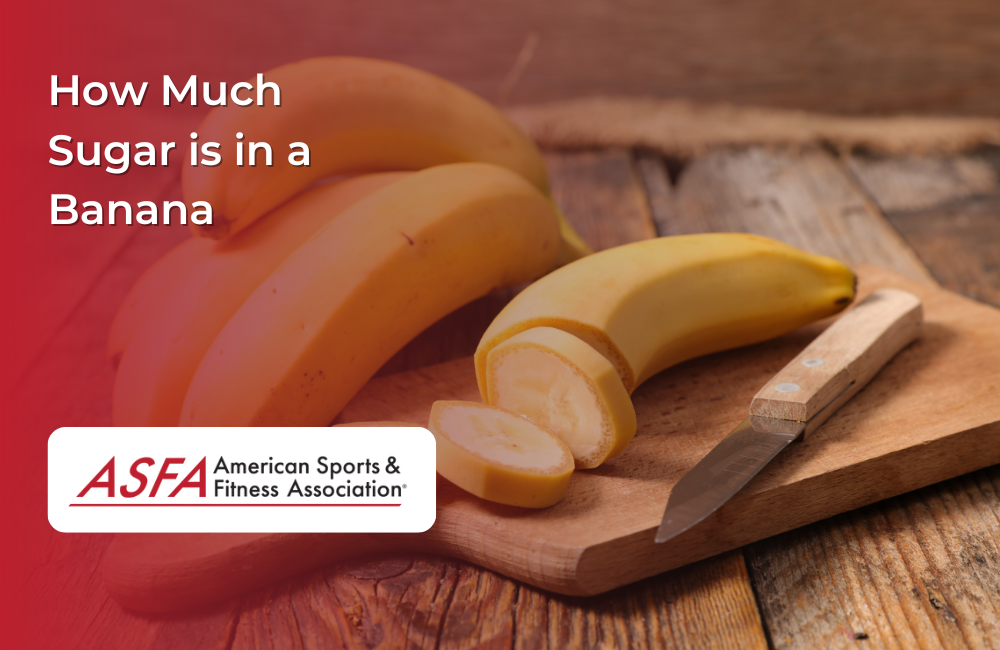Bananas are a naturally sweet fruit, making them a popular source of quick energy and essential nutrients. The sugar content in a banana varies based on its size and ripeness, as sugars increase as the fruit matures. Understanding how much sugar is in a banana helps in managing dietary intake, blood sugar levels, and energy balance.
How Much Sugar is in a Banana? A Guide by Size
-
Small banana (6 inches or less) – ~12-14 grams of sugar
-
Medium banana (7-8 inches) – ~14-17 grams of sugar
-
Large banana (9 inches or more) – ~17-20 grams of sugar
Bananas contain natural sugars (fructose, glucose, and sucrose), which provide quick and sustained energy. Unlike added sugars, these natural sugars, also known as fruit sugar, come with fiber, vitamins, and minerals that help regulate blood sugar levels.
Understanding Banana Sugar Content
Bananas are a beloved fruit, but their sugar content often raises questions. It’s important to note that bananas contain natural sugars, which are different from the added sugars found in processed foods. These natural sugars, including fructose, glucose, and sucrose, provide a quick energy boost and come packed with essential nutrients. Understanding the sugar content in bananas can help you make informed dietary choices, ensuring you enjoy the benefits of this nutritious fruit without overindulging in sugar.
Factors Affecting Sugar Content
The sugar content in bananas isn’t a one-size-fits-all scenario; several factors come into play:
-
Ripeness: Ripe bananas are sweeter because the starches in the fruit convert to sugars as they ripen. Green bananas, on the other hand, have higher resistant starch content and lower sugar levels, making them a better option for those looking to manage their blood sugar levels.
-
Size: The size of the banana also matters. A medium-sized banana typically contains around 14-17 grams of sugar, while a very large banana can have up to 20 grams. Smaller bananas, therefore, have less sugar.
-
Variety: Different banana varieties have varying sugar levels. For instance, the popular Cavendish banana tends to have more sugar compared to other types.
-
Growing Conditions: Bananas grown in warmer climates may develop more sugar than those grown in cooler regions, due to the influence of temperature on the fruit’s ripening process.
By considering these factors, you can better understand how much sugar you’re consuming with each banana.
How Ripe Bananas Affect Sugar Levels
As bananas ripen, their starch content converts into sugar, making them sweeter and easier to digest. This increase in sugar can raise blood sugar levels, especially in individuals with diabetes.
-
Green (unripe) bananas – Higher in resistant starch, lower in sugar, with a slower impact on blood sugar.
-
Yellow bananas – More balanced sugar-starch ratio, providing moderate energy release.
-
Spotted or brown bananas – Highest sugar content, as most starch has turned into simple sugars.
Choosing the Right Banana
If you’re mindful of your sugar intake, selecting the right banana can make a significant difference. Here are some tips to help you choose:
-
Opt for Green Bananas: Green bananas contain less sugar and more resistant starch, which digests more slowly and helps avoid blood sugar spikes.
-
Choose Smaller Bananas: Smaller bananas naturally have fewer grams of sugar compared to their larger counterparts.
-
Select Less Ripe Bananas: Bananas that are not fully ripe have lower sugar content than fully ripe bananas, making them a better choice for those watching their sugar levels.
-
Look for Low-Sugar Labels: Some bananas are labeled as “low-sugar” or “green bananas,” indicating they may have fewer grams of sugar.
Remember, while it’s important to manage sugar intake, bananas are still a healthy food rich in dietary fiber, vitamins, and minerals. Including them in your diet can provide numerous health benefits, as long as you consume them in moderation.
How Bananas Fit Into a Healthy Diet
-
For Energy – Great pre- or post-workout snack due to natural sugar and carb content.
-
For Blood Sugar Control – Pairing with protein or healthy fats (like nuts or yogurt) slows sugar absorption.
-
For Digestive Health – The fiber in bananas helps regulate sugar release and digestion.
Despite their sugar content, bananas are considered healthy foods due to their high fiber, vitamin, and mineral content.
Conclusion
A medium banana contains around 14-17 grams of natural sugar, with levels increasing as the fruit ripens. While higher in sugar than some fruits, bananas provide fiber, potassium, and vitamins, making them a nutrient-rich energy source. Eating them in moderation as part of a balanced diet supports energy, digestion, and overall health.
FAQs
Is banana sugar bad for you?
No, the natural sugars in bananas come with fiber and nutrients, unlike processed sugars.
Do bananas raise blood sugar?
Yes, but the fiber helps regulate absorption, making them a better option than refined sugars for maintaining a stable blood sugar level.
Which banana has the least sugar?
Green (unripe) bananas have less sugar and more resistant starch, which digests more slowly.
Are bananas good for diabetics?
Bananas can be part of a diabetic diet when eaten in moderation and paired with protein or fats to slow sugar absorption. Compared to orange juice, which has a higher concentration of sugar, bananas provide a more balanced option for those managing diabetes.
How does a banana compare to other fruits in natural sugars?
A ripe banana has more sugar than berries but less than tropical fruits like mangoes and pineapples.





